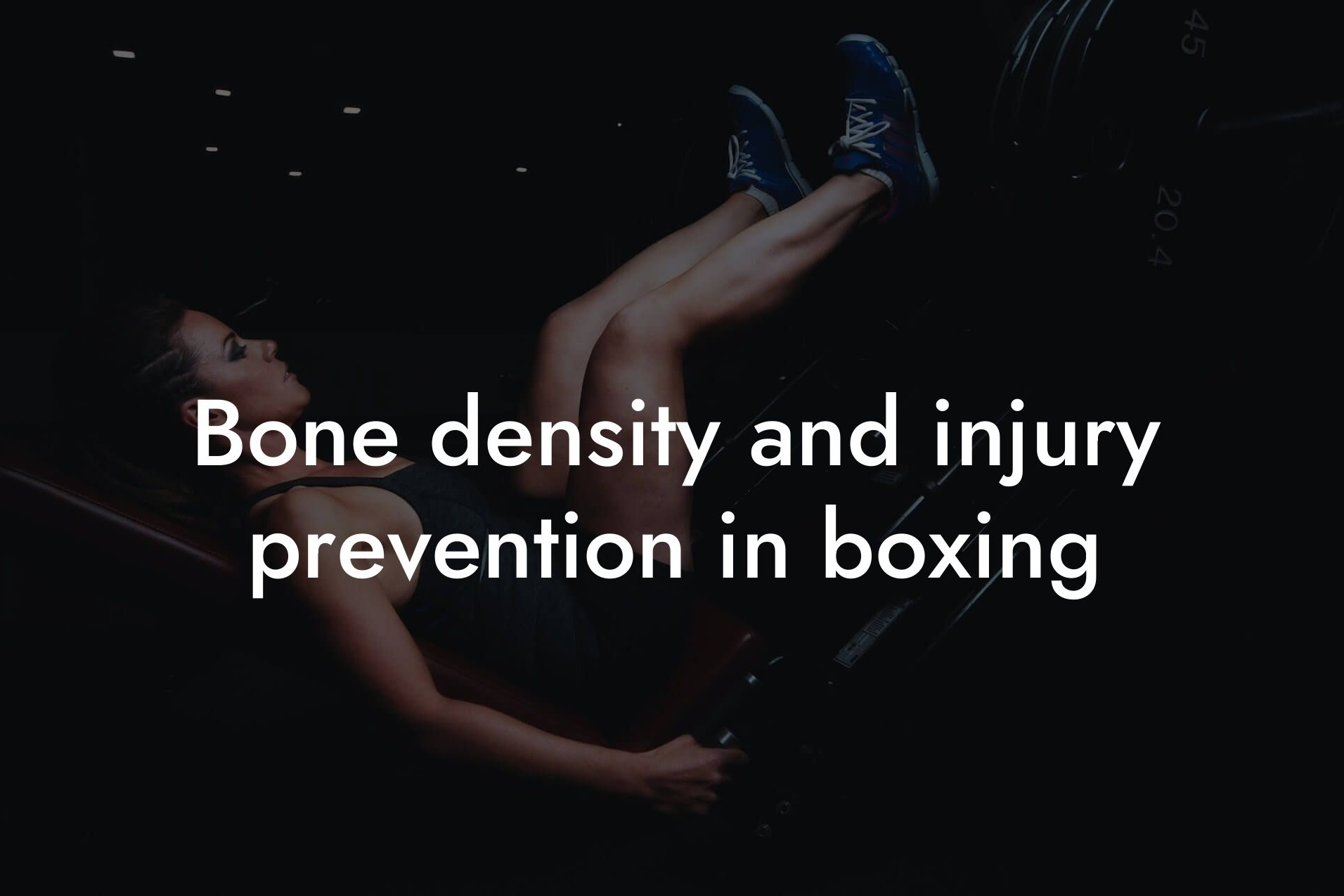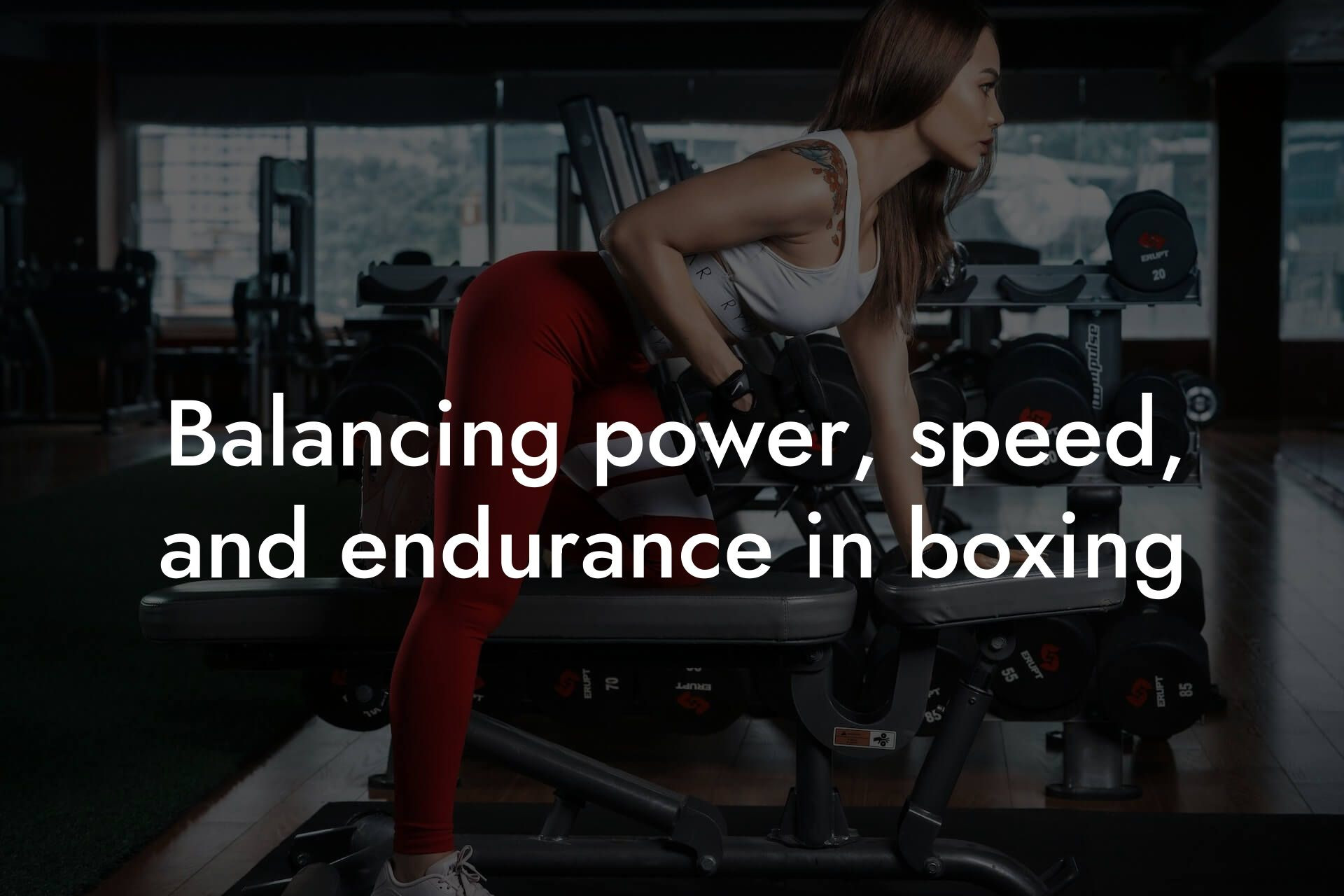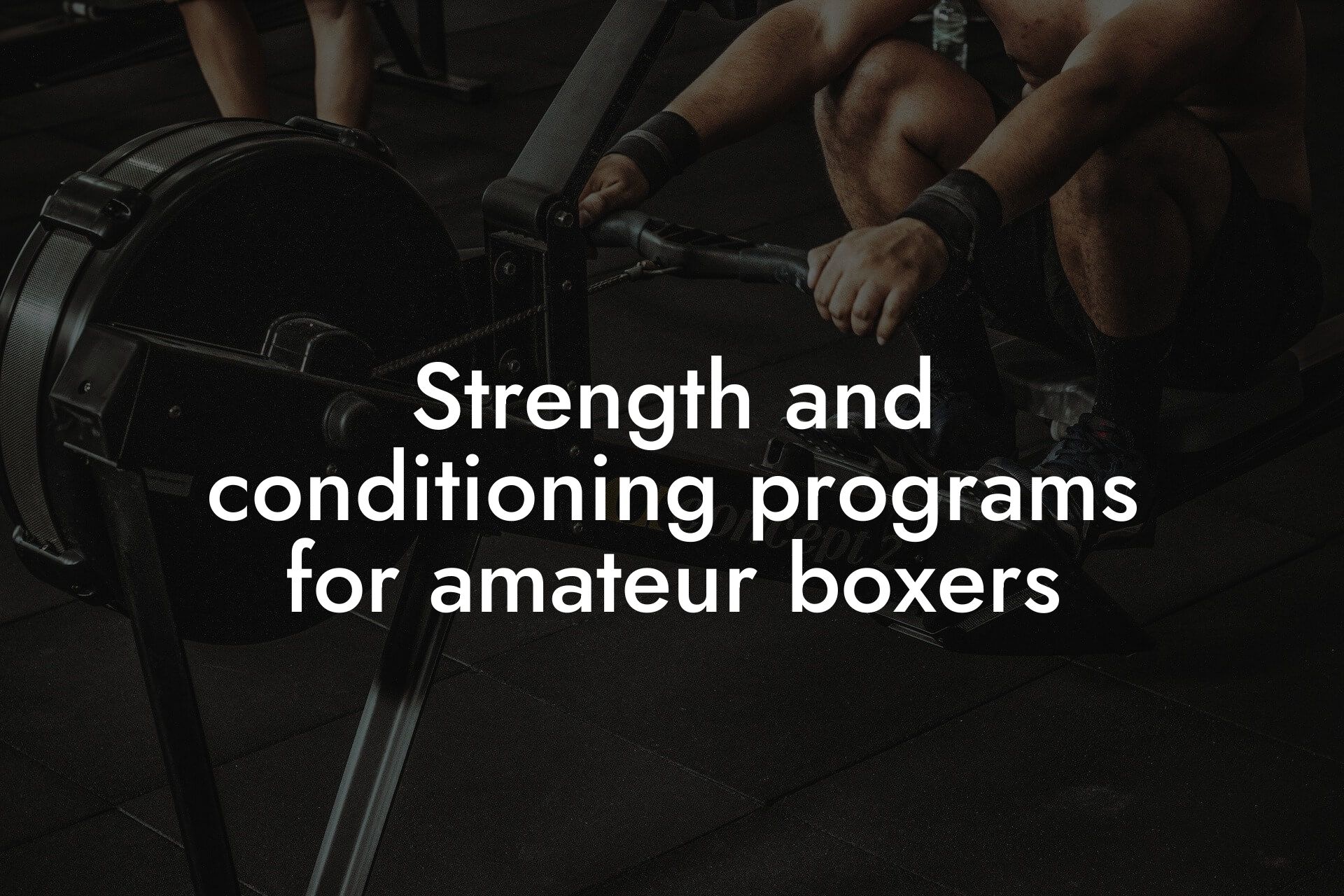Introduction
As a high-earning professional, you understand the importance of maintaining a strong physical appearance and physique. In the world of boxing, having a well-balanced combination of muscle mass and speed can be the key to success. At Tano Performance Group, we recognize the importance of providing individuals with the necessary tools and information to optimize their physical performance. In this article, we will delve into the significance of muscle mass and speed in boxing, and how our DEXA machine can help you achieve your goals.
Table of Contents
The Role of Muscle Mass in Boxing
Muscle mass plays a crucial role in boxing, as it provides the power and strength needed to throw punches, defend against opponents, and maintain endurance throughout a fight. A boxer with a high percentage of lean muscle mass will have a significant advantage over their opponent, as they will be able to generate more force and speed in their punches. Additionally, muscle mass helps to improve bone density, reducing the risk of injury and improving overall physical resilience.
In boxing, muscle mass is particularly important in the following areas:
- Chest muscles: responsible for generating power and speed in punches
- Back muscles: essential for stability and rotation when throwing punches
- Shoulder muscles: crucial for maintaining proper punching technique and generating force
- Leg muscles: necessary for explosive power and agility in the ring
The Importance of Speed in Boxing
Speed is a critical component of boxing, as it allows a fighter to evade their opponent's punches, create angles, and land quick combinations. A boxer with quick hands and feet will be able to outmaneuver their opponent, creating opportunities for counterattacks and landing devastating blows. Speed also helps to improve reaction time, allowing a fighter to respond quickly to their opponent's movements.
In boxing, speed is particularly important in the following areas:
- Hand speed: essential for landing quick jabs and combinations
- Foot speed: necessary for creating angles and evading punches
- Reaction time: critical for responding quickly to an opponent's movements
The Relationship Between Muscle Mass and Speed
While muscle mass and speed are distinct components of boxing, they are closely intertwined. A boxer with a high percentage of lean muscle mass will be able to generate more power and speed in their punches, while also improving their overall agility and reaction time. Conversely, a boxer with quick hands and feet will be able to create opportunities to land powerful punches, leveraging their muscle mass to devastating effect.
How to Improve Muscle Mass and Speed in Boxing
Improving muscle mass and speed in boxing requires a combination of proper training, nutrition, and recovery. Here are some tips to help you optimize your performance:
- Resistance training: focus on exercises that target multiple muscle groups at once, such as push-ups, pull-ups, and squats
- Plyometric training: incorporate explosive exercises like jump squats and box jumps to improve power and speed
- High-intensity interval training: use HIIT to improve cardiovascular endurance and burn fat
- Proper nutrition: fuel your body with a balanced diet that includes plenty of protein, complex carbohydrates, and healthy fats
- Adequate recovery: prioritize rest and recovery to allow your muscles to rebuild and adapt
The Role of DEXA Scanning in Boxing
At Tano Performance Group, we understand the importance of providing boxers with accurate and actionable information about their bodies. Our DEXA machine uses advanced technology to provide a comprehensive body assessment, including measurements of muscle mass, bone density, and body fat percentage. With this information, boxers can:
- Identify areas for improvement: pinpoint specific muscle groups that need attention and develop targeted training programs
- Track progress: monitor changes in muscle mass, bone density, and body fat percentage over time
- Optimize nutrition: tailor their diet to support muscle growth and recovery
- Reduce injury risk: identify potential areas of vulnerability and take proactive steps to address them
Real-World Applications of Muscle Mass and Speed in Boxing
In the world of professional boxing, the importance of muscle mass and speed cannot be overstated. Here are a few examples of how these components have contributed to the success of top boxers:
- Mike Tyson: known for his formidable punching power, Tyson's impressive muscle mass and speed made him a formidable opponent in the ring
- Floyd Mayweather Jr.: Mayweather's quick hands and feet allowed him to evade his opponents' punches and land devastating counterattacks
- Canelo Alvarez: Alvarez's combination of muscle mass and speed has made him one of the most feared boxers in the world, with a string of impressive victories against top opponents
In conclusion, muscle mass and speed are critical components of boxing, providing the power, strength, and agility needed to succeed in the ring. By understanding the importance of these components and taking proactive steps to improve them, boxers can gain a competitive edge and achieve their goals. At Tano Performance Group, we are committed to providing individuals with the tools and information they need to optimize their physical performance. With our DEXA machine and expert guidance, you can take your boxing career to the next level.
Frequently Asked Questions
What is the importance of muscle mass in boxing?
Muscle mass plays a crucial role in boxing as it provides the power, strength, and endurance needed to throw punches, defend against opponents, and maintain a strong stance throughout the fight. A boxer with a higher muscle mass can generate more force behind their punches, making them more effective in knocking out their opponent.
How does muscle mass affect a boxer's punching power?
Muscle mass directly affects a boxer's punching power as it determines the amount of force they can generate behind each punch. A boxer with more muscle mass can accelerate their fists faster and with more force, resulting in a more powerful punch. This is because muscle mass provides the strength and speed needed to generate torque and velocity in the arms and shoulders.
What is the ideal muscle mass for a boxer?
The ideal muscle mass for a boxer depends on their weight class and fighting style. Generally, a boxer should aim to have a lean muscle mass of around 10-15% body fat, with a focus on building strength and power in their upper body, particularly in their shoulders, back, and arms.
How can a boxer increase their muscle mass?
A boxer can increase their muscle mass through a combination of proper nutrition, strength training, and rest. A diet rich in protein, complex carbohydrates, and healthy fats is essential for muscle growth and repair. Strength training exercises such as weightlifting, push-ups, and pull-ups can help build muscle mass, while rest and recovery allow the muscles to repair and grow.
What is the importance of speed in boxing?
Speed is essential in boxing as it allows a boxer to evade their opponent's punches, create angles, and land quick and precise punches. A fast boxer can outmaneuver their opponent, creating opportunities to land shots and gain an advantage in the fight.
How does speed affect a boxer's defense?
Speed is critical in a boxer's defense as it allows them to slip, bob, and weave around their opponent's punches. A fast boxer can quickly move their head and body out of the way, making it difficult for their opponent to land a clean shot. This enables them to conserve energy and create counterattacking opportunities.
What exercises can improve a boxer's speed?
Exercises such as shadowboxing, bag work, and footwork drills can improve a boxer's speed. These exercises focus on quick movements, rapid-fire punches, and agile footwork, all of which are essential for developing speed and agility in the ring.
How can a boxer improve their hand speed?
A boxer can improve their hand speed through exercises such as finger push-ups, wrist curls, and forearm rotations. These exercises target the muscles in the hands, wrists, and forearms, allowing for faster and more precise punching.
What is the relationship between muscle mass and speed in boxing?
Muscle mass and speed are interconnected in boxing. A boxer with a higher muscle mass can generate more power behind their punches, but may sacrifice some speed and agility. Conversely, a boxer with a lower muscle mass may be faster and more agile, but may lack the power and strength needed to knock out their opponent. A balance between muscle mass and speed is crucial for optimal performance in the ring.
How can a boxer achieve a balance between muscle mass and speed?
A boxer can achieve a balance between muscle mass and speed by incorporating a combination of strength training and speed drills into their workout routine. This can include exercises such as weightlifting, plyometrics, and agility drills, which target both muscle mass and speed.
What is the role of nutrition in building muscle mass and speed in boxing?
Nutrition plays a critical role in building muscle mass and speed in boxing. A diet rich in protein, complex carbohydrates, and healthy fats provides the necessary fuel for muscle growth and repair. Adequate hydration and electrolyte intake are also essential for optimal performance in the ring.
How can a boxer optimize their nutrition for muscle mass and speed?
A boxer can optimize their nutrition for muscle mass and speed by consuming a balanced diet that includes lean protein sources, complex carbohydrates, and healthy fats. Post-workout nutrition is also critical, with a focus on consuming protein and carbohydrates within 30-60 minutes after exercise to aid in muscle recovery and growth.
What is the importance of rest and recovery in building muscle mass and speed?
Rest and recovery are essential in building muscle mass and speed in boxing. Adequate rest allows the muscles to repair and grow, while recovery techniques such as stretching, foam rolling, and massage can help reduce muscle soreness and improve flexibility.
How can a boxer incorporate rest and recovery into their training routine?
A boxer can incorporate rest and recovery into their training routine by scheduling regular rest days, incorporating recovery techniques such as stretching and foam rolling, and prioritizing sleep and relaxation. This allows the body to recover and adapt to the demands of training, leading to improved performance in the ring.
What is the role of genetics in determining muscle mass and speed in boxing?
Genetics play a role in determining muscle mass and speed in boxing, as some individuals may be naturally more inclined towards building muscle or possessing quick reflexes. However, genetics are not the sole determining factor, and a boxer can still improve their muscle mass and speed through dedicated training and nutrition.
How can a boxer overcome genetic limitations in building muscle mass and speed?
A boxer can overcome genetic limitations in building muscle mass and speed by focusing on proper training and nutrition. A well-structured workout routine, combined with a balanced diet and adequate rest and recovery, can help a boxer maximize their genetic potential and achieve optimal performance in the ring.
What is the importance of mental preparation in building muscle mass and speed?
Mental preparation is crucial in building muscle mass and speed in boxing. A boxer's mindset and focus can affect their performance in the ring, and mental preparation techniques such as visualization and positive self-talk can help improve confidence and motivation.
How can a boxer incorporate mental preparation into their training routine?
A boxer can incorporate mental preparation into their training routine by practicing visualization techniques, setting goals and affirmations, and engaging in positive self-talk. This can help build confidence and motivation, leading to improved performance in the ring.
What is the role of coaching and training in building muscle mass and speed?
Coaching and training play a critical role in building muscle mass and speed in boxing. A qualified coach can provide guidance on proper technique, create a customized training plan, and offer support and motivation throughout the training process.
How can a boxer find a qualified coach or training program?
A boxer can find a qualified coach or training program by researching local gyms and coaches, seeking referrals from other boxers, and looking for certifications and credentials such as USA Boxing or Golden Gloves.
What are some common mistakes boxers make when trying to build muscle mass and speed?
Common mistakes boxers make when trying to build muscle mass and speed include overtraining, inadequate nutrition, and poor recovery techniques. These mistakes can lead to injury, burnout, and suboptimal performance in the ring.
How can a boxer avoid common mistakes when building muscle mass and speed?
A boxer can avoid common mistakes when building muscle mass and speed by working with a qualified coach, prioritizing proper nutrition and recovery, and listening to their body and taking regular rest days. This helps prevent injury and burnout, leading to optimal performance in the ring.
Here are some related articles you might love...
- Bone density and injury prevention in boxing
- Balancing power, speed, and endurance in boxing
- Strength and conditioning programs for amateur boxers
- Reducing body fat for optimal weight class in boxing
- Nutrition tips for maintaining energy and muscle in boxing
- How body composition affects performance in boxing
- Off-season training for amateur boxers
- Recovery strategies for boxers after sparring sessions
- The role of DEXA scans in boxing training and weight management
Zak Faulkner
Zak Faulkner is a leading authority in the realm of physical health and body composition analysis, with over 15 years of experience helping professionals optimise their fitness and well-being. As one the experts behind Tano Performance Group, Zak has dedicated his career to providing in-depth, science-backed insights that empower clients to elevate their physical performance and overall health.
With extensive knowledge of DEXA technology, Zak specializes in delivering comprehensive body assessments that offer precise data on body fat, muscle mass, bone density, and overall physique. His expertise enables individuals to make informed decisions and achieve their fitness goals with accuracy and confidence. Zak’s approach is rooted in a deep understanding of human physiology, combined with a passion for helping clients unlock their full potential through personalised strategies.
Over the years, Zak has earned a reputation for his commitment to excellence, precision, and client-focused service. His guidance is trusted by top professionals who demand the best when it comes to their health. Whether advising on fitness programs, nutritional strategies, or long-term wellness plans, Zak Faulkner’s insights are a valuable resource for anyone serious about taking their health and fitness to the next level.
At Tano Performance Group, Zak continues to lead our Content Team revolutionising how professionals approach their physical health, offering unparalleled expertise that drives real results.




